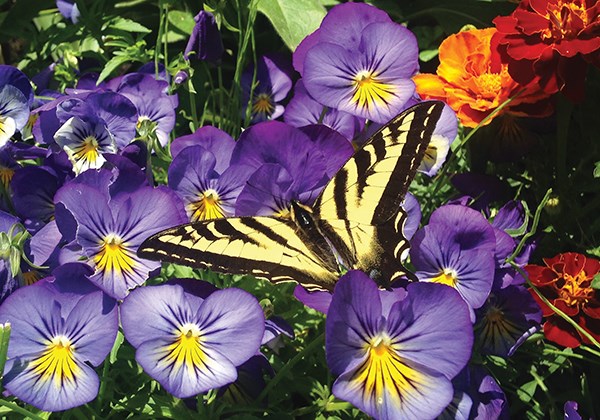When I was by the hardware store on the weekend, it was full of happy shoppers buying plants, trees, shrubs, veggie starts and hanging baskets. The shelves were loaded with tempting goodies calling out to be taken home and enjoyed.В
Planting is one of those things that seem simple, and we all have an innate knowledge of how to plant something. But trust me, folks, there is a right way and a wrong way, and if you’re spending good money on plants, it pays to take the time to do it correctly and keep your plants healthy.
Let’s start with annuals. An annual is a plant that lives its entire lifecycle in one season. It starts from seed, grows, flowers then dies. All parts of the plant including the leaves, roots and stems die the same year. These are popular with gardeners for instant colour and are often used in hanging baskets.
Annuals are the show-stoppers in the garden and provide mega flower power. All that hard work (living and dying in one year) means you need to feed them more than perennials and shrubs. Proper fertilization in the first six to eight weeks makes a big difference in how they perform throughout the season. Use an all-purpose fertilizer like 5-10-5 or 10-10-10 once every 10 to 12 days, and make sure to water before and after you apply the fertilizer. Take off old blooms – this is called “dead heading” and it encourages more new blooms as well as making the plant look sharp.
A perennial plant is one that comes back every year. Most perennials are herbaceous, meaning the top part of the plant above the soil dies down and the rootball stays alive under the ground until the next spring.
When you buy a perennial in a pot from your local garden store, look for healthy leaves and upright growth. The one thing you can’t view before you buy is the rootball, but please pay attention to it once you have the plant home.В
Often the rootball has been in the pot too long and is literally fighting to get out. Sometimes we refer to the plant being “root-bound.” If this is the case, don’t just plunk the plant into a hole when you get home, but take the time to pull or tease out the roots from the sides and bottom.  Sometimes a plant has very girdled roots, and you need to take out a serrated knife and really cut into the rootball to free the roots so they grow down and out to the sides rather than growing around and around itself.
As a general rule, with perennials, shrubs and trees, plant your new plant at the same depth that is sits in the pot and dig your new hole twice as wide. This allows room for the roots to move out and grow. Don’t fill the new hole with compost or fertilizer as you create a “sweet spot” for the plant; its roots won’t grow out to reach for nutrients. Fertilize after the plant has been planted and watered.
Try to soak all plants before planting, and if you can, transfer them on a cloudy day to reduce stress for your new plant.




